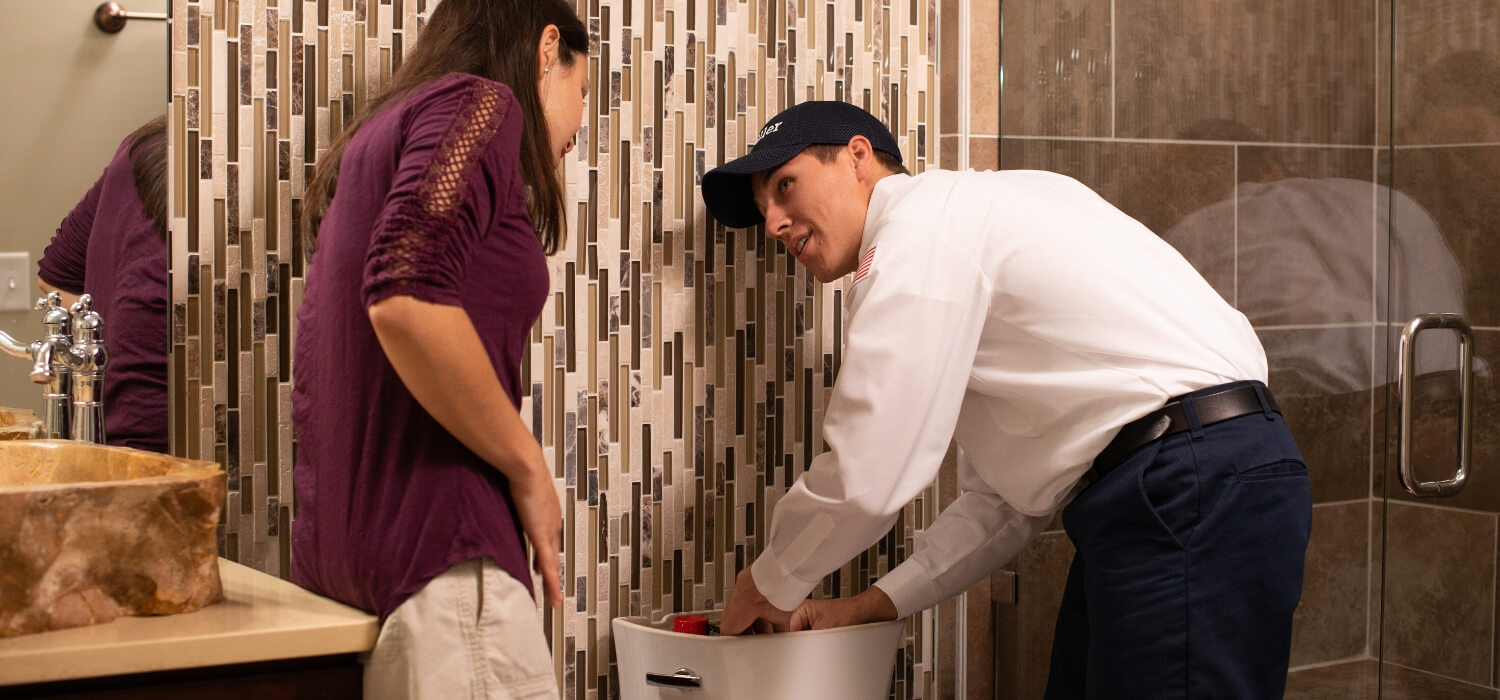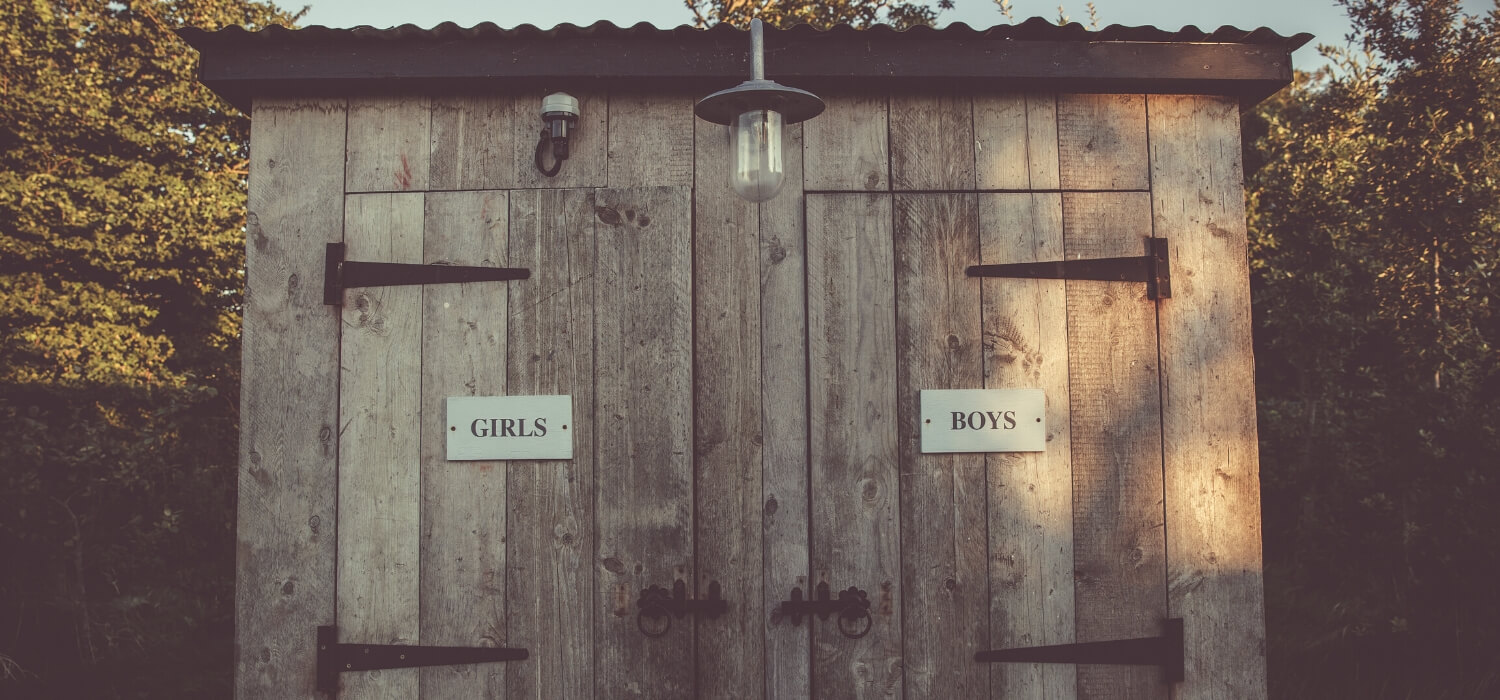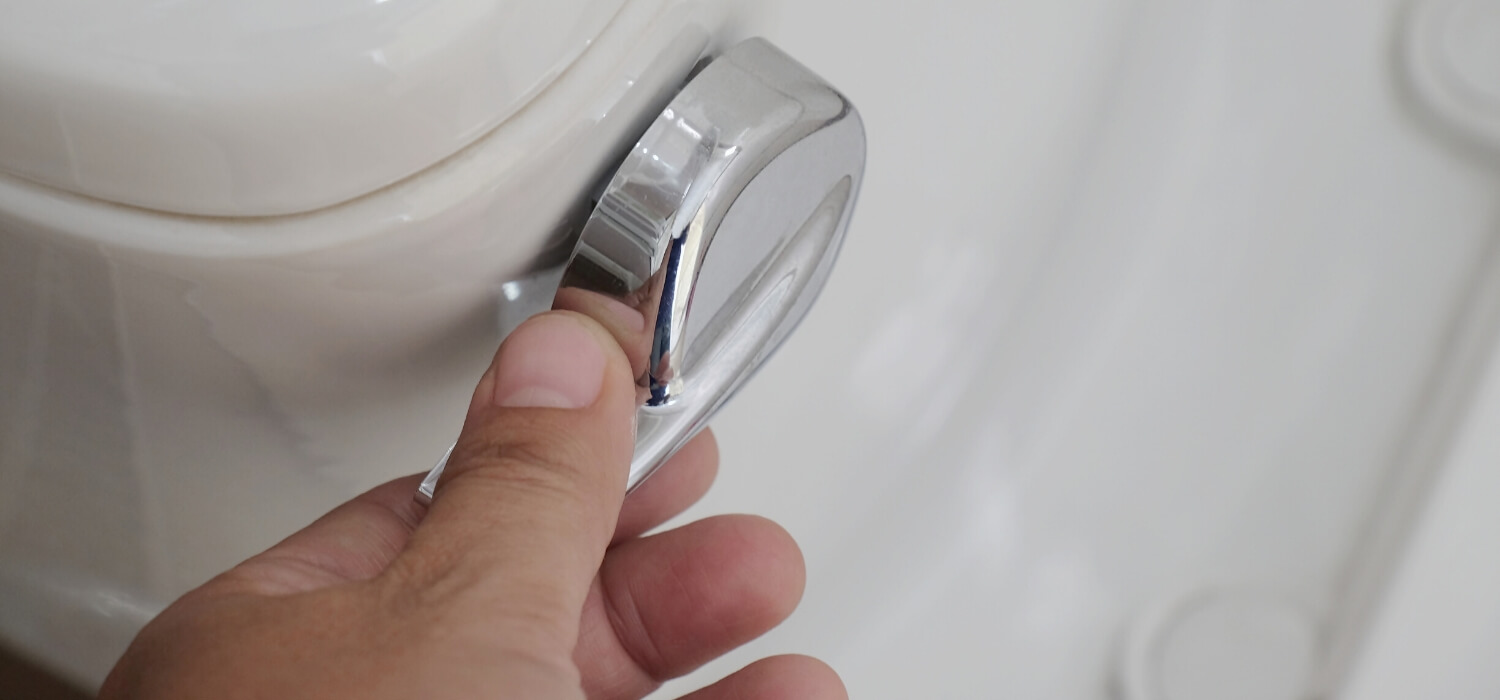Reasons for a Clogged Toilet and How to Prevent the Problem
Enjoy reading the latest DIY articles and saving money?
Receive our latest helpful hints, tricks and savings, directly to your inbox.
Posted June 5, 2020
Are you tired of seeing your toilet clogging? Are you searching for ways to solve your clogged toilet for good?
Toilet clogs are one of the most common plumbing concerns homeowners experience. Though you can go the DIY route to unclog your toilet, some cases call for extra help from a professional. However, going with the latter means spending anywhere from $45 to $200 an hour on plumbing fees.
But dealing with clogs requires knowing the possible causes. Like in illnesses, the best way to address clogged toilets is through prevention.
How do you do it? What are the essentials that you need to know to keep your toilets functioning smoothly? Continue reading below as we resolve the clogging conundrum.
The Parts of a Toilet

Before we tackle the reasons that lead to a clogged toilet, let us first discuss the different parts of a toilet. This is important considering that some of the reasons for clogging directly affect specific parts of the toilet. Thus, you need to understand the source of the clog.
P-Trap
This is a P-shaped trap that holds standing water and seals the drain system. By sealing the drain system, the P-trap keeps sewer gases from entering your home’s drainage system. In turn, it keeps the stinking smell away from your toilet.
Soil Stack
Every time you flush the toilet, waste goes through the P-trap. It then moves through the branch drain and eventually to the house drain and sewer. But before it reaches the latter, it goes through the soil stack.
The soil stack is a vertical drainpipe that works as the chief conveyor of all wastewater and sewage. It also covers all your sinks.
Soil Stack Vent
To ensure proper ventilation in the house drain and soil stack, the soil stack vent is a must. It keeps any back pressure from building up within the drainage system. A soil stack vent normally extends to your home’s roof.
House Drain
After going through the soil stack, all wastewater and sewage end up on your house drain. This is the point that connects directly to the sewer.
Cleanout
The cleanout is a part of the house drain that extends upward and goes the opposite direction of the flow. A cap or a plug usually covers the end of the cleanout. But you can open it if you need to access the drainpipe.
House Sewer
After all the waste goes through the drainage system, they all end up down the house sewer. This directly connects the sewer main that directs all wastewater and sewage toward the treatment plants.
What Causes the Clogging?

A clogged toilet is one of the most common plumbing problems hounding homeowners. Thus, it is imperative to identify its possible causes. Let’s take a look at them below.
An Old-Gen Toilet
Sometimes, it is the toilet itself that is causing the problem. An old generation toilet is one of the most problematic considering its low-flush nature. This type of toilet is prone to causing problems connected to low water pressure.
It also comes with little power when it comes to pushing waste down the drain. This is particularly evident for toilets coming from the mid to late-90s.
Modern-day toilets come with low-flow designs that focus on water consumption and efficiency.
Flushing Non-Flushable Items
When there is clogging, there is likely an item that keeps that waste from flowing down. Incidentally, there are several non-flushable items that people tend to keep on flushing.
Leading the list of items you should never flush on your toilet is the feminine products. These are your pads and tampons that expand whenever you flush them. Additionally, they take a very long time to break down in the sewer system.
Next, are your paper towels and cleaning wipes. Even if the packaging says they are “flushable,” it doesn’t mean they cannot damage your pipes. Instead, you should consider using old rags or compostable paper towels and tossing them in the trash when you are finished.
You should also avoid flushing your Q-tips and cotton balls. When these things get wet, they can easily clump together. When this happens, they can clog your pipes.
Grease is another big no-no. Even if you pour it into the water, it can build up in your pipes the moment it cools down. Interestingly, grease is the leading culprit for sewer backups.
Too Much Toilet Paper
Though toilet paper is flushable, too much of it can lead to clogging. Yes, toilet paper disintegrates faster than your wipes and paper towels. But flushing too much may contribute to a backup.
This happens when there is already an existing clog that is building up in your pipes. Toilet paper may compound the situation when it mixes with other debris.
Issues with the Main Sewer Line
Existing problems with your main drain and sewer lines can also cause clogging. If you have an old drain line, you can expect regular waste and other non-flushable items to accumulate.
In severe cases, a clogged main sewer line can cause multiple toilets to clog up. When this happens, you need to call a licensed plumber to take over.
Blockages on the Plumbing Vent
Since your plumbing vent is up on your roof, it may come in contact with different kinds of outdoor elements. Over time, debris such as leaves, sticks, and bird nests can clog the vents. When this happens, the blockage will reduce the drain flow.
In such instances, you need to hire a plumber to clean up the vents. Taking out the blockage requires special tools that only professionals offer.
Hard Water Concerns
Not too many homeowners are aware of hard and soft water. Hard water contains minerals that may calcify in time. When this happens, it forms a white substance that is quite a chore to remove.
Too much of this calcified substance lessen that gap where waste can pass through, thus causing the clogging. To address this, you can call a professional plumber to scrape off the buildup.
You may also go for a long-term solution which is installing a water softener. This device works by treating your water right before it enters your toilet. It softens the minerals to reduce the instances of calcification.
Old Pipework
Much like an old toilet, the old pipework in your house can also cause clogging in your toilets. When pipework ages, it becomes prone to collapsing. When this happens, it may become a source for clogs.
One of the signs you need to watch out for is sediment backwash. If you have more than one toilet in the house and all of them seem clogged, it may point to more severe damage to your pipework.
In either case, you need to call a plumber to check on the condition of the pipes. Be ready for some pipe upgrades and replacement if need be.
Those Fresheners
If you think those toilet fresheners are harmless, think again. When these things deteriorate, particularly the kind that hangs over the toilet’s rim, it may fall into the toilet.
When this happens, it may cause a hard clog in your toilet drain. Hence, go for a freshener that you can place inside the tank. This way, you can rest knowing that the freshener will not fall down the drain once it deteriorates and loses its grip.
Defective Flapper
We already established that a weak flush contributes to clogging. One of the elements that ensure ample flushing pressure is the flapper. This is the round rubber gasket that you will see at the bottom of the tank.
The flapper works by opening up whenever you flush. It then allows the water from the tank to flush down. When the flapper does not completely open, it may result in a weak flush.
This leads to waste not reaching the bottom of the drainpipe because of the weak pressure. Thankfully, fixing the flapper is easy.
Look for the chain that connects to the flush arm. You can adjust the chain and shorten it a few links before giving it a try.
Preventing a Clogged Toilet

Now that you know some of the most common causes of blockages in your toilet, we can now shift our attention to prevention. Let’s take a look at some clever tips that will go a long way:
Practice Mindful Flushing
The simplest way to prevent clogs is to practice proper flushing. This means becoming more mindful of the things that you flush down the toilet drain.
If you’re flushing toilet paper, make sure you are flushing the right amount. A good rule of thumb is you can flush anything that comes from your body. Anything beyond which is not toilet paper is a no-no.
For starters, you can make a list of the things that cannot flush in your toilet. Place the list against your bathroom wall where you can easily see it.
Use the Double-Flush
You may also consider flushing the toilet twice. After eliminating your waste, flush the toilet first before throwing the tissue paper down the toilet bowl. Thereafter, flush the second time around to ensure that the tissue paper goes deep down the drain.
You may also split your use of tissue paper between the two rounds of flushing.
Trace the “Roots”
If you often encounter clogging or if your toilet backs up frequently, it may be a case of tree roots affecting the main sewer line. When tree roots grow underground, they can reach the pipes. As they continue to grow, they can intrude on the pipes and clog them up.
Dealing with tree roots in your sewer line entails extensive attention. The first thing to do is to call a reputable plumber to conduct an initial inspection. Thereafter, regular maintenance is in order.
You also need to identify the warning signs. Apart from frequent clogs, keep an eye out for overflowing or slow-flowing drains. You should also listen if there is a gurgling sound whenever you flush the toilet.
Clear the Tanks
Never use the toilet tank as extra counter space. Avoid placing items like soap, tissue paper, and brushes on top of the toilet tank. You may accidentally knock down these items into the bowl.
Do Not Delay
If you experience a weak flush or a slow drain, address the matter accordingly. Never leave the situation idle for a long time before making a move.
Before calling a plumber, try using your good old plunger. If everything else fails, don’t hesitate to call a plumber.
Regular Cleaning a Must
Always clean your toilet regularly. Though this involves more on the aesthetics side of things, cleaning your toilet helps you spot potential leaks faster.
Cleaning your toilet will help you detect if there is water dripping or pooling on the floor. From there, you can trace where the dripping comes from and take action immediately.
Avoid Chemical Drain Cleaners
When it comes to your toilet cleaners, stick to the safe ones. Chemical drain cleaners can be too strong for some pipes, causing damage to the latter. The same thing goes for chemical in-tank cleaners that may damage toilet hardware.
Conduct Inspections Twice a Year
Last but not least, make sure to inspect the inner workings of your toilet twice a year. Thorough inspections will help ensure that all the key components are functioning properly.
It will also help determine if you need to install upgrades or replace some fixtures. Replacing an old toilet is sometimes more economical in the long run.
Let’s Fix Your Toilet, Today!

A clogged toilet is something that you can prevent. Through proper flushing practices, you can ensure the topnotch performance of your toilets. But if things go array, you can count on us to extend a helping hand.
Give us a call and or send us a message and let us know your plumbing concerns. We offer drain cleaning, drainpipe treatment, and toilet upgrades and installations.
Request an appointment and let’s work on your toilet and plumbing needs, today!
 Daily Promotion
Daily Promotion
Save up to $1,500 off Whole Home Water Filtration System
Save up to $1,500 off Whole Home Water Filtration System!
Get Promotion